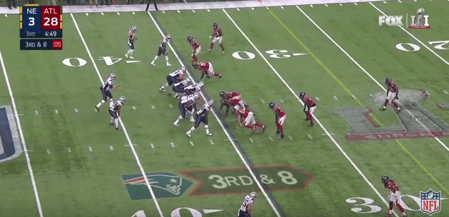I’ve written on this subject, talked about it at workshops/keynotes and presented it to our clients in our Sales Managed Environment® Certification program for over 20 years. But, here I go again and for good reason – it’s still a problem. It’s still in the news. It’s still something that we get asked about when we present at the Community Bank CEO Network and other venues. It’s a problem that doesn’t seem to have a solution.
Wrong!
Let’s take a minute first to analyze the problem or to help you identify if you have a problem. (This will be kind of like Jeff Foxworthy’s “You know you're a redneck if…” routine.)

You know you have a sales growth problem if…:
- You cannot consistently and accurately predict future sales GROWTH
- You recognize that most of the sales (90% or so) are being generated by 33-45% of the sales team.
- Less than 10% of the sales are being generated by over 50% of the team
- You have salespeople in the middle of the sales performance bell curve that are not performing as you expected. (Did you really hire those people to only perform like the average sales person on your team?)
- Your new hires are not ramping up fast enough
- Your cost of “ghosts” (people that you hire and are no longer there) is a 2-comma problem
- You seem to be coaching the same stuff over and over and over again
- Your people continually make excuses for lack of outcomes, performance results.
I could go on, but why?
I first recognized the sales growth problem in sales organizations many years ago when I was working with Anthem Blue Shield and Blue Cross here in Ohio. I was meeting with Jim Barone, who is currently the National Vice President – Business Development for Lincoln National. At the time, he held a regional sales management position for Anthem and he and I were scheduled to meet in Cleveland with his sales team for a training session and sales meeting.
In preparation for the meeting, I reviewed the production report year-to-date for the team (about 25 reps). I had not yet read any Perry Marshall material on The 80/20 of Sales and Marketing (The book hadn’t been published yet…) and, though I had heard of the Pareto Principle, I really didn’t understand it like I do today. When looking at the numbers, I discovered that roughly 20% of the reps were responsible for about 80% of the results. That was startling. But, not nearly as startling as what I discovered next.
The bottom 20% of the team – about 5 reps – were responsible for less than 1% of the results and the bottom 33% of the team was responsible for less than 10% of the results. The first question I was going to ask Jim was, “Why are these people still with you?” (CLICK HERE here to get rid of the 80/20 in your organization.)
Over a year ago, I did the same type of analysis for a large nationally-based broker dealer specializing in serving the credit union market. We looked at 100 advisors. What we were looking for was data to support the position that, in order for a financial advisor to break through the upper limits of their productivity, they had to segment their book.
As I looked at the collective data, it became very obvious that every advisor in every quintile had a book that had a similarity – 36% of the clients represented in their client base (as many as 1,000 clients) were responsible for 94% of their total AUM (assets under management). Furthermore, when we analyzed the bottom 36%, that group only represented less than 5% of the total revenue. Taking one more step, we uncovered that it would take 16 sales from the lower 36% to equal the average AUM from the top 20% of the book.
We thought we knew this, but now we had the data to prove it.
Just for fun, I looked at the AUM from the 100 advisors for the broker dealer and guess what I found? You guessed it – 36% of the advisors were responsible for over 90% of the total AUM. Again, the questions have to be – Why do you have the other 64% of the advisors? Why do they perform so poorly? Were they hired this way – to perform at this level? What was missing in the on-boarding, training and management of those advisors?
One of the easy reactions to the data is this – “Tony, you have to understand that some of the advisors we were looking at don't have the same tenure as those in the top 36%.” Okay, I will buy that. But, are you telling me that is the case from #1 all the way to #100? The answer is no. In the mix of the top 1/3, there are less tenured advisors, and in the bottom 1/3, there are very senior advisors.
The tenure argument doesn’t work. The economy argument doesn’t work. The competition argument doesn’t work. The compensation argument doesn’t work and, finally, the DoL regulation or regs of any sort argument doesn’t work. In every instance, the numbers hold up.
So, what is the problem? What are the constraints to sales growth? Why is it so $%^&* hard to solve the sales growth problem? There are five reasons I want to discuss, but first, let’s agree to some assumptions:
- Your organization has a solid strategic plan to gain market share. (If not, contact Gazelles. Verne Harnish is a genius and the concepts in his book, Scaling Up, will change your business.)
- Everyone is either rising or sinking with the economic tide.
- Your company’s compensation plan fits with in the suggested range of the industry. (Contact Peter Bielen or Scott Stathis to discuss compensation.)
- You have access to the products and services that the ideal prospects identified in your strategic plan want and need
- Your support partners provide you the backend client services that you need.
Again, the list can go on – in general, let’s assume that the basics to start and sustain a business are in place. But, something is missing year in and year out that makes sales growth so difficult. Here are the 5 constraints to consistent and predictable sales growth:
- Weak or lack of Performance Management. Understand what performance management is NOT – setting goals and then telling people that they have to work harder if they are not hitting the goals. It is NOT using PIPS as a way to get people to perform. A solid performance management structure and strategy requires a couple of steps, systems, and processes.
- Identifies the right metrics to measure success
- Creates benchmarks that force salespeople to work harder and better
- Holds people accountable to the THINGS they need to do to get sales growth results
- In addition to the items listed above, the executor (sales manager, sales coach, sales leader) needs to have the right sales management behaviors and skills
- Any coaching is in-the-moment coaching rather than Coaching for Success. Coaching for Success is intentional/planned coaching. It is based on what the data identifies as choke points in executions or lack of effort. In-the-moment coaching does not focus on changing behavior and improving skills. It’s kind of like what happens in a time-out in most sports. There is a situation in the game that requires some additional thought and strategy. The coach calls a time-out to discuss the strategy and lay out a plan to execute “in the now.” That type of coaching is designed to solve the in-the-moment problem, but it virtually does nothing to change behavior or improve skill overall. Coaching for Success requires:
- Data points established as a result of the performance management success formula (The metrics that define success identified in your performance management strategy)
- Data collection
- Reporting that identifies the variance in actual performance from goal performance
- Gaining business intelligence from the data report
- Effective coaching skills http://c.ymcdn.com/sites/www.bisanet.org/resource/resmgr/onesource/9_skills_to_coaching_success.pdf, systems and processes
- A consistent process of disciplined coaching designed to help the advisor get on track and stay on track because behaviors change and skills improve.
The remaining constraints are:
- Hiring sales people based on the wrong criteria with the wrong processes and systems. To Hire Better SalesPeople, you have to have a better way to attract better people and a better way to eliminate those 90% that will not do 100% of what you need them to do.
- Ineffective motivation via culture, sales meetings and recognition. Most sales managers don’t know what motivates their people. If you are going to Motivate for Success, it is important to know what motivates them.
- Inadequate hiring. When just enough is good enough, the sales organization fails to regularly Upgrade the Sales Force.
Pass this article on! http://bit.ly/2jPOGFO
Contact us – 513.791.3458
Contact Tony Directly - tony@anthonycoletrainingcom or text 513.226.3913 with the message “Call me”
Additional Resources:






